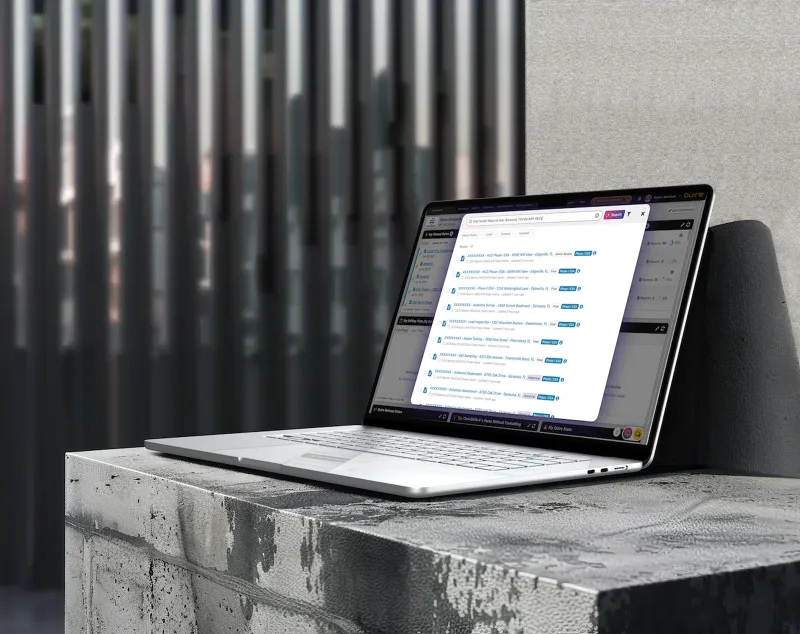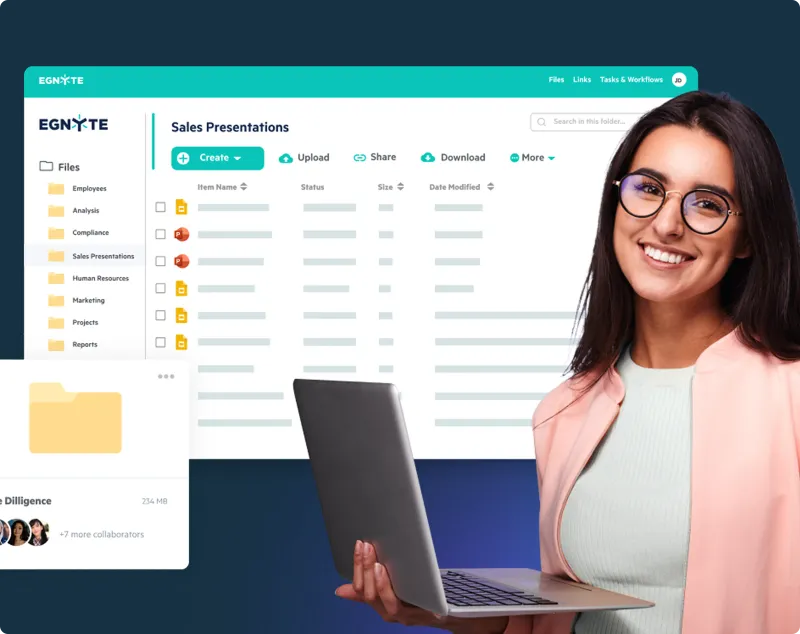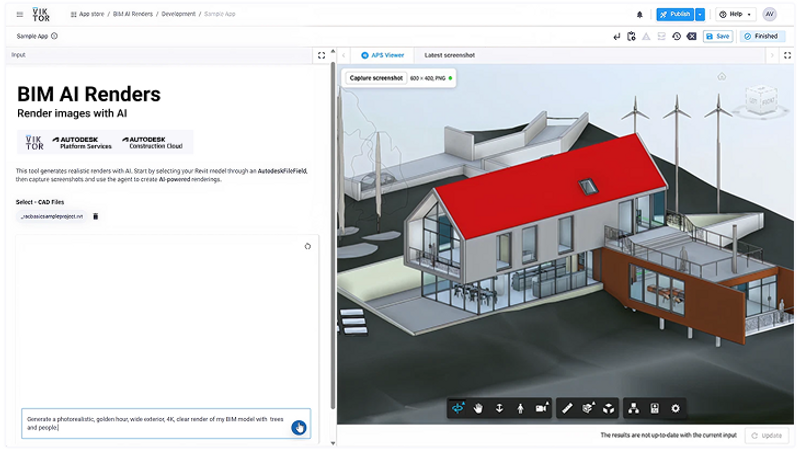Implementing AEC Technologies: Insights from Industry Leaders
Summary: This article summarizes the key points from a popular AEC+Tech talk titled "Implementing AEC Technologies," emphasizing the importance of tech adoption in the growing AEC industry. Nirva Fereshetian, Principal and CIO at CBT Architects, and Bill Carney, Principal and Design Technology Leader at DLR Group, discussed their approaches to incorporating new technologies into their firms.
Hosted in March 2024 as part of the AEC+Tech talk series, “Implementing AEC Technologies” has become the most widely attended event on our platform, owing to the sheer relevance of the topic of conversation, in the booming tech-space of the AEC industry. True, we have lately seen the emergence of a ton of new products, tools, applets, microservices, and so on, each tackling a key problem area of our profession. While some are proving to withstand the test of time and get adopted into mainstream practice, a lot of others don’t seem to share a similar fate. And it’s got a lot to do with the implementation of these tools.
The event invited Nirva Fereshetian from CBT Architects, and Bill Carney from DLR Group, who share a lot of relevant insight on the tech implementation strategies they undertake in their practices. Read on to find out more!
Nirva Fereshetian, CBT Architects
Nirva Fereshetian is a Principal and the Chief Information Officer at CBT Architects, where she leads the Digital Design Practice Group and is responsible for aligning technology strategy to meet primary business objectives.
She states that the technology group in their office identifies as a ’Digital Practice’, situated in tandem with the firm’s design and business objectives. Nirva talks about their four-fold organizational structure, including business technology, design technology, computational design, and knowledge management, all of whom are supported by a group of tech allies they work together with, in different roles. She says that this kind of clear structure lets their office best achieve their goals with digital design practice.
Our practice follows different classes of digital workflows as part of our tool ecosystem. There is a massive explosion in the kinds of tools that are now available in the market to conduct AEC practices and solve problems, which has given rise to our rightfully termed “ecosystem” of sorts. Broadly, the practice has 4 classes of workflows: individual, team-wide, office-wide, and expert-led, each of which addresses a crucial problem area for the practice.” Nirva explains.
She cites Enscape,Twinmotion as an example of individual workflows, where architects and designers solve their visualization needs with either of the two software, depending on their respective needs and level of tool-proficiency. Moving on to team workflows, she talks about the tool MarkupX, a simple but extremely handy review tool that allows the communication of redlines from Bluebeam to Revit. Such tools, Nirva highlights, aren’t something that their design technology team tests out; rather, a project team picks it up and implements it on what they’re working on, and then mainstream its use from there.

Talking of entire-office workflows, she mentions platform-based tools like Avail, a full-scale content management system: these are tools that almost everyone uses, and as such it has to constantly be updated for emerging requirements on a day-to-day basis. Such tools also demand continuous learning and training, and are very difficult to replace and revert decisions, once made at the office-scale.
Speaking of expert workflows, Nirva points to UpCodes - the widely used code-compliance-check software. At their practice, she says such tools enable junior folks to get acquainted with the nuances behind contemporary practice and how they reflect while solving design problems. More so, such tools sub-in partially for the senior experts in an office, thereby conveying domain expertise across multiple teams and people, thus taking less of the senior experts’ time. Most questions are answered by the tool and a small percentage then goes to the Senior experts. Nirva also talks about their new service models in building performance and materiality, through tools like ClimateStudio and One Click LCA, which hold a lot of relevance in early design stages.

Coming to the crux of implementing AEC tools, Nirva reveals their 70-30 philosophy.
About 70% of new technology comes into the office via the Design Technology group. First off, this group researches new tools and workflows for solving certain design/business problems or automating a task. Second, they deploy the tool to test its robustness in a pilot project. The choice of the project, the team handling the tool, and the real-life problems to be solved are very critical to its wider implementation. Third, if the tool makes a part of the ecosystem, training sessions are taken up to get the tool out office-wide, where in-house trainers and the knowledge-manager sets up workflows to adopt and mainstream it.” Nirva says.
The other 30% of their new technology is introduced by their tech-allies: champions from the office who bring in a new tool/product that solves a particular problem they’ve encountered. The same kind of stress-tests and pilot-deployment take place, but the teams work closely with the champion/tech-ally who brings the idea in, before making bigger decisions.
Nirva affirms that the success of a new technology’s implementation in their practice depends almost solely on checking four boxes: Is it going to make us faster? Is it going to make us better quality-wise? Does it achieve equal or better results with a better price point? Is it a new service altogether that will surely create value? The Return on Investment one could anticipate in terms of time, effort, and resources are perfectly captured by these questions, thereby making decisions about new technology a lot more informed.

Their practice is a big advocate when it comes to working with startups, Nirva mentions. She agrees that we are currently witnessing an explosion of new tools and technology in our profession, and the design-tech scene is abuzz with a ton of great ideas. However, the same can produce a challenge when there are too many new products in the market and making a choice about adopting one becomes difficult, resulting in what she calls ‘tool fatigue’. Plus, the sheer rate of new product releases, updates, etc. and the change that comes with it, leads to continuous on-demand training and upskilling.
On the other side, teams could risk using a tool or a product that may go obsolete in the not-so-distant future. While it is true that this digital shift is instigating a proliferation of opportunities, it also brings along an ample number of challenges that need to carefully be evaluated before any tech adoption and implementation.”
Nirva concludes her talk placing her focus on people and the extension of collaboration and sharing with peers outside one’s practice. She rightly points out that people are the biggest factor in successfully implementing new AEC technologies, as they make the tools shine. They create all the heuristics, the synthetic data, and the right pathways for relevant solutions to pressing problems. In a nutshell she sums up, technology doesn’t operate without people at the center of it all!
Bill Carney, DLR Group
Bill Carney is DLR Group's Principle and Design Technology leader. His focus of work is with the Integrated Design Leadership to establish and execute strategies that will enhance DLR's BIM and digital practices. He ensures the work delivered by their teams, office-wide, are on the cutting edge of AEC standards and operations.
Bill begins with an overview of the structure of their design technology group, encompassing four different wings: i) the Digital Practice wing that is focused on BIM and GIS management, driving up efficiencies and adoption of automation; ii) the Digital Design wing involved in the creation of new tools and scalable enterprise products, as well as solving complex design problems; iii) the Digital Services wing that works with reality capture, but also moving beyond to capture the digital exhaust of their tools to build services for clients; and iv) the R&D wing that keeps a track of everything that will disrupt the digital ecosystem of their practice.

Bill shares a wealth of thought leadership experiences (and thus lessons) wrapped in quirky metaphors, from his time working as a design technology leader, that revolve around successful implementation of AEC technologies at scale.
Planting seeds and dangling carrots
Bill talks about throwing a ton of ideas into the practice that help enhance and improvise their digital practices, which he refers to as planting seeds. Upon nurturing the right seeds to development, and weeding away those that are irrelevant, you set off and infuse a culture of innovation to your work. But not everyone loves the change that comes with innovation. So you present the output and the results of what said change can achieve, akin to dangling carrots, to make decision-makers drive the innovation at an office.

Take an hour to save a week
Talking about workflow organization, Bill emphasizes the sheer importance of planning digital tasks. BIM execution and workflow management can sound boring to designers, but are very crucial to make sure time and resources aren’t spent unreasonably. It may be very project-centric, but an efficacious planning of digital tasks and milestones can go a long way to cut down time spent downstream.
Automate yourself out of a job
Bill highlights that their digital practices team targets to automate at least 20% of their job and tasks each year. Although this may sound very techy for an AEC company, Bill stresses that spending time on tasks that could otherwise be automated hinders their actual career growth. Stepping back to identify such tasks to automate away enables them to reorient their focus to the bigger picture, every once in a while.
Assume no one cares
Talking about the mental approach to technology, Bill has learnt that working as a design technology leader makes him someone who represents change. And people don’t necessarily like it. He says that he has learnt to shell himself up mentally and assume that nobody really cares about anything that he brings in as innovation. His job, then, is to get people to a point where they actually do care about the stakes, albeit through a long road!
Bill speaks of their implementation strategy for an in-house spatial layouting tool they’re developing.
“Diving deep into the practice’s BIM data from almost 200 projects, the tool intends to read spatial information, spot different types of rooms, identify the relationships between elements inside rooms, and ultimately discern patterns for replicating the same, given a few constraints.” Bill explains.
Bill showed their exploration of KNNs (K-Nearest Neighbour algorithms) to identify alternatives for floor plans and layouts, as you start working on it. Bill says the goal for the tool lets them identify not just the most apparent autocomplete answer, but also other solutions that are closely related, and as well those that are extremely different from what one would imagine. This gives designers a variety of ideas to pick from, to refine and integrate into projects, while starkly saving time and effort.

Navigating with their vision, Bill explains his way of identifying the ROI with every design technology. Asking yourself questions like, “Does it improve efficiency, enhance quality, or improve our ability to design?”, will help you ascertain how the specific piece of technology stands in your ecosystem, and what kind of value it can create for your practice. Hinting at the jar of rocks metaphor, he stresses that you have to figure out what your big rocks are, put them to work, and make sure to align them to your strategic vision.

Bill, too, stresses strongly on the power of people in the tech space of our industry. A digital practice where everyone supports one another, shares their capabilities, and contributes to creating value visibly is one that grows for the better. A collective of DT folks who plan and support throughout the entire project working closely with designers, with their eyes in the sky to monitor and look for issues to fix, and nurture ideas to raise them, is one that knows where they’re trying to go. And that is exactly what a successful AEC digital practice does!
Nirva and Bill both share a wealth of their experience and career lessons about successful implementation strategies for emerging AEC technologies. In an age where digital tools proliferate faster than ever, these lessons are more than worth grasping, for a firm and lasting foothold in the industry. And as we always say, we have some very exciting times ahead for the AEC tech space!
Recent Articles
Learn about the latest architecture software, engineering automation tools, & construction technologies

Pioneering Technical Report Management (TRM™) for AEC Firms: A Quire Deep Dive
Learn how Quire founder Kelly Stratton is reinventing technical reporting in our latest aec+tech interview, where its purpose-built TRM™ platform, WordBank-powered standardization, AI-driven Smart Search, quality control, and the Lazarus knowledge engine come together to help AEC, environmental, and CRE teams cut reporting time and errors while unlocking their institutional expertise.

Moving to the Cloud: Egnyte’s Staged Approach for Architecture Firms
As projects grow, AEC firms are rethinking data management and collaboration. This article outlines Egnyte’s six-stage Architecture Cloud Journey—a practical roadmap for moving from on-premise systems to secure, collaborative cloud environments. From assessment to continuous improvement, it shows how to streamline workflows, strengthen security, and future-proof with AI-ready infrastructure.

SaaS Founders: Are You Timing Your GTM Right?
This article was written by Frank Schuyer, who brings firsthand experience as a founder in the software and SaaS world. In this piece, he explores how founders can unlock faster growth and stronger market traction by integrating go-to-market strategy (GTM) from the very beginning of product development—rather than treating it as an afterthought.

The VIKTOR App Builder: Putting Automation into Every Engineer's Hands
The VIKTOR App Builder is changing how engineers automate their work. Built on VIKTOR’s secure, enterprise-ready platform, it lets users turn calculations, checks, and post-processing tasks into shareable browser-based apps—no coding required. In this interview, CPO Stijn Jansen explains why the team created it, how it bridges no-code, low-code, and full-code workflows, and what it means for the future of AI-assisted engineering.